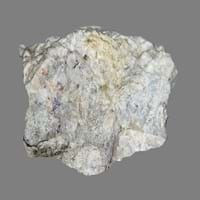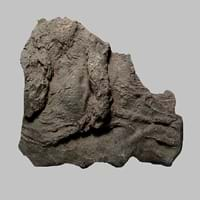Definition
Skarns are formed during regional or contact metamorphism and from a variety of metasomatic processes involving fluids of magmatic, metamorphic, and/or marine origin
During the impact melted material forming a breccia containing glass and crystal or lithic fragments together form Suevite rock.
Origin
USA, Australia
Canada, Germany
Discoverer
Tornebohm
Unknown
Etymology
From an old Swedish mining term originally used to describe a type of silicate gangue or waste rock.
No etymologies found
Class
Metamorphic Rocks
Metamorphic Rocks
Sub-Class
Durable Rock, Hard Rock
Durable Rock, Medium Hardness Rock
Group
Not Applicable
Not Applicable
Other Categories
Fine Grained Rock, Opaque Rock
Coarse Grained Rock, Opaque Rock
Texture
Earthy, Mud-rich, Rough
Earthy
Color
Black, Brown, Colourless, Green, Grey, White
Black, Brown, Colourless, Green, Grey, Pink
Durability
Durable
Durable
Scratch Resistant
Yes
Yes
Interior Uses
Decorative Aggregates, Entryways, Interior Decoration
Decorative Aggregates, Homes, Interior Decoration
Exterior Uses
As Building Stone, As Facing Stone, Garden Decoration, Paving Stone
As Building Stone, As Facing Stone, Garden Decoration, Office Buildings
Other Architectural Uses
Curbing
Curbing
Construction Industry
As a Flux in the Production of Steel and Pig Iron, As a Sintering Agent in Steel Industry to process Iron Ore, As Dimension Stone, Gold and Silver production, Manufacture of Magnesium and Dolomite Refractories
As Dimension Stone, Cement Manufacture, for Road Aggregate, Making natural cement, Manufacture of Magnesium and Dolomite Refractories
Medical Industry
Not Applicable
Not Applicable
Antiquity Uses
Artifacts, Monuments, Sculpture
Artifacts, Monuments, Sculpture
Commercial Uses
Creating Artwork, Gemstone, Jewelry, Metallurgical Flux, Source of Magnesia (MgO)
As a Feed Additive for Livestock, Gemstone, Metallurgical Flux, Source of Magnesia (MgO)
Types
Endoskarns
Phyllosilicates, Calcite
Features
Host Rock for Lead, Zinc and Copper Deposits
Host Rock for Lead
Archaeological Significance
Famous Monuments
Data Not Available
Data Not Available
Famous Sculptures
Data Not Available
Data Not Available
Pictographs
Not Used
Used
Petroglyphs
Not Used
Used
Formation
Due to change in environmental conditions, rocks are heated and pressurized deep inside the Earth's surface. Skarn is formed from the extreme heat caused by magma or by the intense collisions and friction of tectonic plates.
Suevite is a metamorphic rock consisting partly of melted material, typically forming a breccia containing glass and crystal or lithic fragments, formed during an impact event.
Mineral Content
Calcite, Enstatite, Epidote, Garnet, Magnetite, Pyroxene, Titanite
Coesite, Quartz, Stishovite
Compound Content
Au, CaO, Carbon Dioxide, Cu, Fe, MgO
CaO, Carbon Dioxide, MgO
Types of Metamorphism
Burial Metamorphism, Cataclastic Metamorphism, Contact Metamorphism, Hydrothermal Metamorphism, Impact Metamorphism, Regional Metamorphism
Burial Metamorphism, Cataclastic Metamorphism, Contact Metamorphism, Hydrothermal Metamorphism, Impact Metamorphism, Regional Metamorphism
Types of Weathering
Not Applicable
Not Applicable
Types of Erosion
Not Applicable
Not Applicable
Grain Size
Fine Grained
Coarse Grained
Fracture
Irregular
Uneven
Streak
Light to dark brown
Light to dark brown
Porosity
Less Porous
Less Porous
Luster
Waxy and Dull
Earthy
Toughness
2.4
Not Available
Specific Gravity
2.86
2.86
Transparency
Opaque
Opaque
Density
2.8-2.9 g/cm3
2.8-2.9 g/cm3
Resistance
Heat Resistant
Heat Resistant
Deposits in Eastern Continents
Asia
China, India, Russia, Saudi Arabia, South Korea, Sri Lanka
Not Yet Found
Africa
South Africa, Western Africa
Not Yet Found
Europe
United Kingdom
England, France, Germany, Great Britain, Netherlands, Sweden, Switzerland, United Kingdom
Others
Not Yet Found
Not Yet Found
Deposits in Western Continents
North America
Canada
Not Yet Found
South America
Brazil, Colombia, Paraguay
Not Yet Found
Deposits in Oceania Continent
Australia
Central Australia, Western Australia
Not Yet Found
All about Skarn and Suevite Properties
Know all about Skarn and Suevite properties here. All properties of rocks are important as they define the type of rock and its application. Skarn and Suevite belong to Metamorphic Rocks.Texture of Skarn is Earthy, Mud-rich, Rough whereas that of Suevite is Earthy. Skarn appears Dull and Suevite appears Banded. The luster of Skarn is waxy and dull while that of Suevite is earthy. Skarn is available in black, brown, colourless, green, grey, white colors whereas Suevite is available in black, brown, colourless, green, grey, pink colors. The commercial uses of Skarn are creating artwork, gemstone, jewelry, metallurgical flux, source of magnesia (mgo) and that of Suevite are as a feed additive for livestock, gemstone, metallurgical flux, source of magnesia (mgo).










